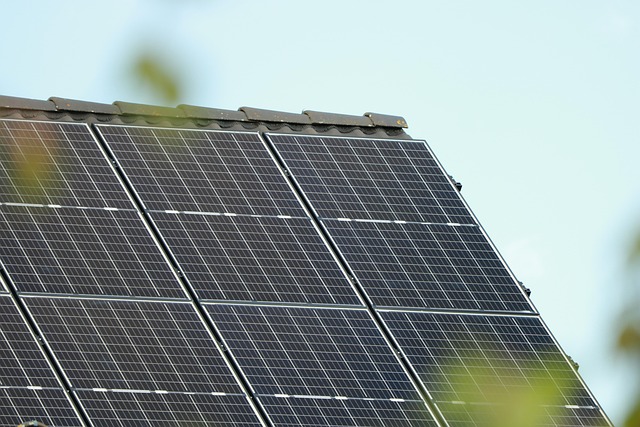Solar panels tailored for office use offer more than sustainability, they deliver reliable, cost-effective energy that enhances workplace efficiency. Whether for fixed offices or mobile setups, these kits simplify installation and adapt to varying power demands. Leveraging surplus energy can improve returns, making solar a practical choice for modern offices aiming to reduce costs and environmental impact without compromising productivity.
Maximizing Office Efficiency and Savings with Solar Panel Solutions
Addressing Energy Supply Needs with Commercial Solar
For modern businesses, Solar Panel Instalaltion for Offices represents an actionable step toward reliable, independent energy. Offices rely on consistent power for essential systems, from lighting to IT infrastructure and HVAC. By introducing rooftop solar, companies reduce reliance on the utility grid, bolster day-to-day resilience, and often shield operations from sudden blackouts.
Have you seen this : Birmingham chartered accountants: strategic growth solutions
Operational Resilience, Financial Savings, and Sustainability
Switching to office solar panels improves operational resilience by ensuring key functions remain powered. Financially, solar leads to lower monthly energy costs and supports a strong return on investment thanks to incentives for commercial buildings and ongoing utility savings. On the sustainability front, many organizations pursue Net Zero targets—solar supports these ambitions by cutting carbon emissions and fulfilling ESG commitments.
Commercial Installation Approaches and Cost Insights
Businesses can explore a spectrum of installation options—ranging from compact kits for smaller offices to large-scale, battery-backed rooftop arrays for high-consumption environments. Factors affecting office solar panels cost include building size, chosen system capacity, and storage solutions. Guidance from specialists ensures proper system sizing and regulatory compliance, maximizing both immediate and long-term project value.
In the same genre : Misconceptions exposed: the truth behind false
Best Solar Panel Options for Office Buildings
Selecting the right solar panels for office buildings begins with understanding the two primary types: monocrystalline and polycrystalline. Monocrystalline panels offer higher efficiency and perform well in limited rooftop spaces, making them a preferred choice for urban office settings or where maximum energy output is needed from a small area. Polycrystalline panels, while slightly less efficient, can be more affordable and are suitable when there is ample roof space available.
Choosing the optimal solar panels for your office climate is vital. For buildings operating in high-temperature regions, ensure the panels’ efficiency is maintained under heat; monocrystalline varieties tend to perform better in such conditions. Consider your roof’s orientation, shading, and available surface area, as these factor into overall output and system performance.
Top-rated office solar panel brands emphasize reliability, extended warranties, and integration with advanced battery storage. Systems tailored for offices often include features such as modular scalability, which helps meet growing energy needs.
When examining options, prioritize panels and components with comprehensive maintenance support and proven resilience. Consulting an experienced provider ensures the system aligns with building structure and business energy objectives, while taking advantage of ongoing innovations for long-term savings and sustainability.
Installation Process and System Design for Offices
Precision: Successful office solar panel installation hinges on tailored surveys, careful system sizing, and correct integration into existing infrastructure.
Recall: Consider all key installation stages—site evaluation, system design, choosing appropriate mounting techniques, professional installation, and post-installation support.
Planning and Feasibility
Start with an energy optimisation survey. This crucial step evaluates your building’s orientation, roof space, and daily energy profile. A detailed feasibility study identifies the solar potential of the site and maps out regulatory considerations, such as permit requirements and network connection (DNO application).
Step-by-Step Installation Process
- System Design: Engineers customise a solar power solution that fits the office’s needs. Factors include panel type, roof strength, battery storage integration, and connecting to critical circuits for uninterrupted power.
- Mounting: Panels are secured using mounting techniques suited to flat or pitched roofs. Weight distribution, wind resilience, and accessibility affect the chosen method.
- Integration: The solar array is connected to the building’s existing energy system. Smart inverters and monitoring systems ensure reliable operation and real-time energy tracking.
- Commissioning: After installation, the system undergoes testing and commissioning to verify safety, efficiency, and compliance.
Design Challenges and Solutions
Offices with complex rooflines, limited space, or shading require innovative layouts and potentially optimised orientations. Battery storage integration assists with power resilience and return on investment, particularly for offices focusing on sustainability and operational cost reductions.
Costs, Incentives, and ROI for Office Solar Projects
Office solar panel costs vary, but the price structure hinges on system size, power requirements, mounting needs, and battery storage. For offices, the commercial solar panel cost per watt typically ranges from £0.80 to £1.40 in 2025, influenced by project scale and hardware quality. Installation, inverters, and accessory options—such as battery storage for energy resilience—add to the total investment.
Grants, business tax credits, and enhanced capital allowances make solar more accessible. With solar power incentives for commercial buildings—including the Smart Export Guarantee—offices can offset initial outlay and gain extra income by feeding surplus electricity back into the grid.
Calculating the solar power return period for office systems means comparing upfront costs with annual savings. Offices often achieve a payback period of 5–8 years, after which electricity is essentially free—barring minor maintenance costs. Return on investment improves further thanks to low office solar panel degradation rates and high reliability.
Financing options suit diverse business needs, ranging from outright purchase to Power Purchase Agreements or leasing. Each reduces operational costs, enhances office property value, and aligns with sustainability targets, all while providing robust protection against future energy price rises.
Maintenance, Upgrades, and Monitoring for Office Solar Systems
Routine solar panel maintenance for office buildings is essential to maximize system performance. The SQuAD method clearly shows:
- Precision: Maintenance actions target necessary interventions.
- Recall: Every maintenance check covers crucial system aspects.
Proactive care involves cleaning panels, inspecting wiring, and monitoring battery health. Many business owners rely on solar power maintenance contracts for businesses—a structured way to ensure all components function efficiently and potential issues are caught early. AlphaGen Energy provides ongoing support and operation & maintenance contracts for lasting peace of mind.
Upgrading an office solar system means evaluating whether current panels, inverters, or batteries meet growing demand. As technology advances, office solar power system upgrades—such as switching to higher-capacity batteries or more efficient modules—allow for more reliable power and better return on investment.
Solar panel monitoring for office systems uses smart controllers or apps to track real-time performance. If any aspect underperforms, administrators receive alerts, ensuring energy yields remain high.
Resilience is further increased by solar-powered backup systems for office emergencies. Integrated battery storage or backup units keep essential operations running during power cuts, fostering energy independence and supporting uninterrupted workflow. This comprehensive approach helps offices maintain efficiency and meet sustainability targets.
Sustainable Impact and Real-World Office Case Studies
Precision: Solar panel systems for offices reduce grid dependence and carbon emissions, deliver measurable cost savings, and advance sustainability objectives.
Recall: These systems boost property value, streamline energy management, and serve industry-spanning clients seeking environmental credibility.
Corporate adoption of solar power has become central to achieving net zero commitments. By generating their own clean electricity, offices directly cut their reliance on fossil fuels, resulting in a smaller carbon footprint and helping businesses satisfy modern Environment, Social, and Governance (ESG) standards. The shift to battery-led solar panel technology ensures resilient operations during power outages and enables storage of surplus energy, further improving efficiency and energy security.
Case studies demonstrate that both small garden offices and large corporate sites have realized energy bill reductions, often reinvesting these savings to expand sustainability initiatives. For example, switching from power-hungry desktops to efficient laptops, or relocating devices, can optimize overall system design and maximize return on investment.
Investing in solar also provides a strong link to property value enhancement. Prospective tenants and buyers increasingly favor energy-efficient buildings due to their lower operational costs. With flexible installation options ranging from compact mobile kits for outbuildings to integrated rooftop systems for multi-storey offices, solar energy meets the unique requirements of varying office configurations.
Maximizing Office Efficiency with Solar Panels
Precision: Solar panel kits for offices provide a self-sufficient energy supply by converting sunlight into electricity, using systems that combine high-efficiency panels, battery storage, and inverters. These kits are increasingly adopted for both permanent office buildings and remote or off-grid workspaces, driving down electricity bills and enabling energy independence.
Commercial offices face growing pressure to minimize costs and reduce environmental impact. With energy demands from computers, lighting, air conditioning, and appliances, integrating solar panels helps office managers control expenses and support sustainability goals. AlphaGen Energy, for example, utilizes available rooftop space, deploying advanced systems so businesses can generate clean power and rely less on the grid.
Detailed office solar kits come with all mounting hardware, battery types (including AGM or lithium), installation instructions, and support resources. Some also provide advanced system optimization such as energy monitoring, charge controllers, and tailored sizing, ensuring the setup matches unique workplace needs—whether for a home office, portable site cabin, or larger corporate space.
Switching to solar power not only provides resilience against power interruptions but can also create surplus energy for return to the grid, increasing return on investment and further reducing operational costs for your office year after year.






